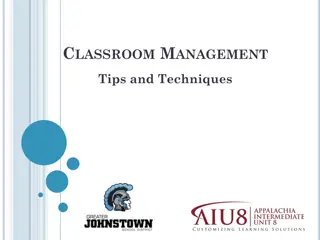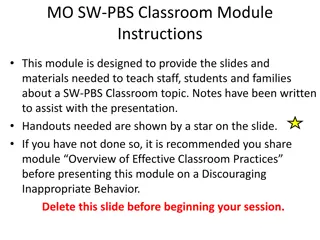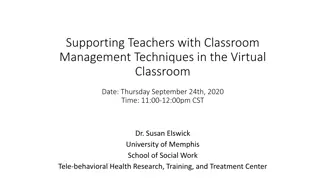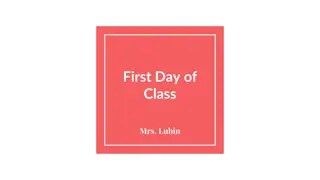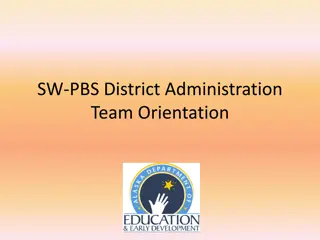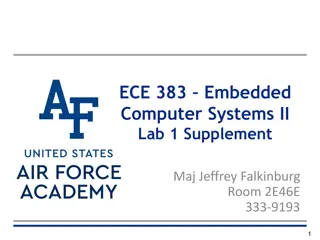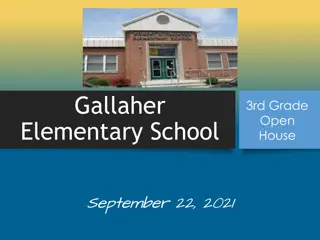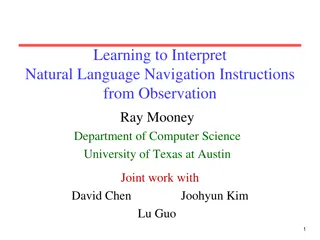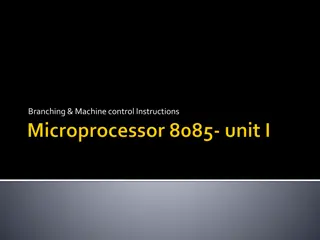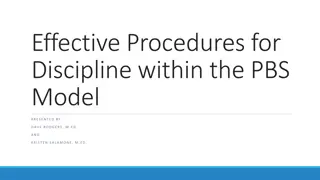SW-PBS Classroom Module Instructions
This module provides materials to teach staff, students, and families about SW-PBS Classroom topics. It includes slides, notes for presentation assistance, and handouts. The content covers activity sequencing, student choice, and effective classroom practices. Follow-up activity suggestions are also provided.
Download Presentation

Please find below an Image/Link to download the presentation.
The content on the website is provided AS IS for your information and personal use only. It may not be sold, licensed, or shared on other websites without obtaining consent from the author.If you encounter any issues during the download, it is possible that the publisher has removed the file from their server.
You are allowed to download the files provided on this website for personal or commercial use, subject to the condition that they are used lawfully. All files are the property of their respective owners.
The content on the website is provided AS IS for your information and personal use only. It may not be sold, licensed, or shared on other websites without obtaining consent from the author.
E N D
Presentation Transcript
MO SW-PBS Classroom Module Instructions This module is designed to provide the slides and materials needed to teach staff, students and families about a SW-PBS Classroom topic. Notes have been written to assist with the presentation. Handouts needed are shown by a star on the slide. If you have not done so, it is recommended you share module Overview of Effective Classroom Practices before presenting this module on Activity Sequencing and Choice. Delete this slide before beginning your session.
MO SW-PBS Classroom Module Instructions (continued) More information is available in the Classroom chapter of the May 2014 MO SW-PBS Team Workbook (available on the MO SW-PBS website) about the topic. Follow-up activity suggestions are on the last slide. These are ideas your school/team might review prior to this presentation to present how you plan to expand the learning past this inservice session. This topic can be separated into two sessions: 1) activity sequencing and 2) student choice. Call your Regional Consultant if you have questions. Good luck! Delete this slide before beginning your session.
Handouts There are the handouts needed for this Classroom Module Activity Sequencing and Choice Teacher Tool Task Interspersal Personal Reflection Student Choice Activities
Activity Sequencing and Choice Activity Sequencing and Choice Teacher Tool 345
Effective Classroom Practices 1. Classroom Expectations 2. Classroom Procedures & Routines 3. Encouraging Expected Behavior 4. Discouraging Inappropriate Behavior 5. Active Supervision 6. Opportunities to Respond 7. Activity Sequencing & Choice 8. Task Difficulty MO SW-PBS 345
Three Levels of Implementation A Continuum of Support for All Academic Systems Behavioral Systems Tier Three Individual Students Assessment-based Intense, durable procedures Tier Three Individual Students Assessment-based High Intensity Tier Two Some students (at-risk) High efficiency Rapid response Tier Two Some students (at-risk) High efficiency Rapid response Tier One All settings, all students Preventive, proactive Tier One All students Preventive, proactive MO SW-PBS 20
Outcomes At the end of the session, you will be able to Describe the value of activity sequencing and choice. Plan lessons to sequence learning activities. Plan lessons to incorporate student choices. MO SW-PBS
Activity Sequencing & Choice The other effective classroom strategies address increasing instructional time and student engagement. Motivation can be a barrier to engagement for some students. For students who can do the work but choose not to do it, activity sequencing and choice strategies may be helpful. MO SW-PBS 345
Activity Sequencing & Choice Offering choice and activity sequencing are preventive (antecedent interventions) because they are implemented before problem behaviors occur (Kern & State, 2009) MO SW-PBS 345
Activity Sequencing & Offering Choice Defined Activity Sequencing: Thinking about and altering the manner in which instructional tasks, activities or requests are ordered in such a way that promotes learning and encourages appropriate behavior. Offering Choice: Providing options in activities such as the type, order, materials, who, where and when they occur to engage in or complete activities. MO SW-PBS
Activity Sequencing & Offering Choice Increases student engagement with learning and task completion through motivation. Decreases disruptive behavior. Improves student perceptions of assignments previously considered too difficult. Helps build positive adult-student relationships. (Kern & Clemens, 2007; Skinner, Hurst, Teeple & Meadows, 2002) MO SW-PBS
Activity Sequencing Sequencing content to promote learning and appropriate behavior. Two strategies: Task Interspersal Intermixing easier tasks among more difficult tasks. Behavior Momentum Using simple instructions to precede more difficult instructions. MO SW-PBS
Task Interspersal What is it? A simple strategy of interspersing tasks that have already been mastered within an assignment of new learning. MO SW-PBS
The Value of Task Interspersal Can be used with all students when preparing materials. Used as an individual intervention for a student experiencing frustration and poor task-completion. For some students presenting difficult tasks back-to- back often sets the occasion for frustration, failure and problem behavior. Varying the sequence of tasks may not be necessary for average students, but can be very important for students who are at-risk for learning or behavior concerns (Darch & Kame enui, 2004). MO SW-PBS
The Value of Task InterspersalContinued Students are more likely to engage in assignments that do not require significant effort. Students become frustrated with work perceived as difficult, requiring a slow pace, more thought or effort. Can promote greater confidence and motivation to both begin and finish the activity. Positively impacts overall perception of the assignment. Allows for review of previously learned content while heading off frustration. MO SW-PBS
Emily is an average math student, but when given more difficult problems she works for a while, then quits and refuses teacher help. She has already mastered multiplication with one and two-digit numbers. To help Emily, the teacher arranges her work to include a mix of three-digit, two-digit, and one-digit problems. The assignment includes more two- and one-digit problems than three-digit. When she finishes a series of problems, Emily is asked to raise her hand. The teacher praises Emily for effort and work completion. This series is repeated and the teacher increases the number of harder problems, checking to see that Emily is successful each time. Eventually, Emily is able to complete a full series of three-digit problems with accuracy. Colvin, 2009 MO SW-PBS
Guideline for Using Task Interspersal An item must be truly at mastery level before using for interspersing. Students prefer assignments when up to 30% of items are new. Intersperse in a ratio of 1:3; one mastered to every three new items. Slowly fade the mastered items as fluency builds with new content. Eventually disperse and eliminate the already mastered items. Logan and Skinner (1998) MO SW-PBS 345
Activity: Task Interspersal Personal Reflection Think of the subjects or content you teach. List several of the activities or assignments students complete in your class. Identify ways you could mix in mastered material with new material in each activity or assignment. Share with a partner Task Interspersal Personal Reflection MO SW-PBS 346
Behavior Momentum What is it? Using the momentum of easier tasks or requests to build energy or motion to complete requests or activities of greater difficulty. (Scott, Anderson & Alter, 2012) When? Who? Can be used with individual students or the entire class. Value of Behavior Momentum Increases likelihood that the more difficult task will be completed. MO SW-PBS 347
Guideline for Behavior Momentum Identify behaviors that have a high probability of completion. Then precede more difficult requests by giving three or more requests the student can readily do. After successful completion, reinforce the student. Then present the task that is known to have a lower probability of being completed. Again, reinforce the student. Gradually reduce the number of easier requests. MO SW-PBS 347
Behavior Momentum Miguel does not like to read, and in the past when asked to read he hangs his head and closes his eyes. Today, his teacher begins the small group reading by reading to him briefly. Then she asks him to follow along and read with her. When he does she praises him then asks him to read every other sentence on his own. She praises him again and now asks him to continue reading by himself. (Colvin, 2009) MO SW-PBS
Discussion: Behavior Momentum Think about your classroom and students. What do you already do to sequence activities or requests to produce behavioral momentum? What students or tasks could benefit from this strategy? How will you incorporate this into your daily practices? Be prepared to share. MO SW-PBS 347
Student Choice What is it? Preplanned methods to provide students with a choice of activities, materials, etc . When? Who? Used selectively with the entire class or individuals. Frequently used with students at-risk who are provided choice on the sequence of their day s work or with a student who has multiple unfinished tasks to complete. Value of Providing Choices Choice appears to help with both compliance and task completion as well as affect or positive student feelings for school and their teacher. Used class-wide, it can have a positive group effect. (Kern, et.al, 1998) MO SW-PBS 348
What Kind of Choices? Type of activity or mode of the task (e.g., written, oral, project, etc.). Materials used to complete an assignment. Order or sequence in which tasks are completed. How the work will be done or with whom to work (e.g., work in a group, pairs, individually). Where to work. What to do when task is done. MO SW-PBS
Activity: Student Choice Read the scenario from Mr. Franklin s class on handout Student Choice Activities. Underline when he offered a choice. Be prepared to share with the group. Student Choice Activities MO SW-PBS 348
Mr. Franklin Offers Choice Mr. Franklin knows that his students enjoy project-based activities that relate to their everyday lives. He also knows of students who love using technology rather than paper and pencil tasks. He considers his resources (e.g., available computers, physical space, staff and time) and develops his plan carefully. When presenting the new unit on recycling, Mr. Franklin offers students a choice of two activities: 1) develop a recycling survey or 2) plan a recycling program. He has students vote on what activity they want to pursue that day. Students then divide into two groups according to their choice. MO SW-PBS
Mr. Franklin Offers Choice - Continued Mr. Franklin allows group one to develop a recycling plan for either their classroom or neighborhood; group two could develop their own survey questions or browse the internet to search for other surveys to use as an example. He further allows students to select whether they prefer to work in their group, pairs or individually. After these decisions are made, Mr. Franklin guides them to choose if they want to handwrite the survey or recycling plan or prepare it on the computer. When the work is complete and shared, Mr. Franklin asks students to write on a piece of paper what parts of the lesson they enjoyed most and why. He plans to use the feedback for future lesson planning. (Adapted from Kern & State, 2009) MO SW-PBS
A Word of Caution About Choices Be sure your choice is a choice not a threat or ultimatum intended as a consequence. These are NOT Choices to Offer: Would you like to do your work here or go to the office? Do you want to do your work now or at recess? MO SW-PBS
Steps for Using Choice in the Classroom 1. Create a menu of choices you would be willing to provide to students. 2. Look through your choice menu before planning each lesson. 3. Decide what types of choice are appropriate and where they fit best in the lesson. 4. Provide choices as planned while teaching the lesson. 5. Solicit student feedback and input. MO SW-PBS
Discussion: Student Choice What are your reactions to giving students choice? How do you currently use choice in your classroom? Are there ways that you could increase the opportunities for student choice without compromising learning outcomes in your classroom? MO SW-PBS
Activity: Student Choice Using the handout list the subjects or content areas that you teach. Identify the ways that you might be able to include student choice for each. Work independently or with a partner. Be prepared to share. Type of activity or mode of task. The order or sequence of tasks to be done. The kind of materials to be used. How the work will be done or with whom to work. The location of the work. Student Choice Activities MO SW-PBS 349
Outcomes At the end of the session, you will be able to Describe the value of activity sequencing and choice. Plan lessons to sequence learning activities. Plan lessons to incorporate student choices. MO SW-PBS
Questions MO SW-PBS
For More Information Missouri Schoolwide Positive Behavior Support websitehttp://pbismissouri.org/educators/eff ective-class-practice
Follow Up Insert expectations your PBIS leadership team and/or administrator have about when each teacher should have incorporated activity sequencing or choice into lesson plans. Insert how your school will follow up: Will the PBIS leadership team and/or administrator do a walk-through on a specific date or a review of lesson plans? Or will grade level/department teams work together to create lessons that include activity sequencing and/or choice? Or will the PBIS leadership team videotape teachers providing activity sequencing or choices to share with other teachers. Insert how your school will celebrate if the outcomes of the follow up are positive. Delete this slide if your school will not do any follow up activities. MO SW-PBS
References Cates, G. L., & Skinner, C. H. (2000). Getting remedial mathematics students to prefer homework with 40% more problems? An investigation of the strength of inerspersal procedure. Psychology in the Schools, 37, 339-347. Colvin, G. (2009). Managing noncompliance and defiance in the classroom: A road map for teachers, specialists, and behavior support teams. Thousand Oaks, CA: Corwin Press. Darch, C. B. & Kame enui, E. J. (2004). Instructional classroom management: A proactive approach to behavior management. Upper Saddle River, NJ: Pearson. Kern, L. & Clemens, N.H. (2007). Antecedent strategies to promote appropriate classroom behavior. Psychology in the Schools, 44(1), 65-75. Kern, L., & State, T. M. (2009). Incorporating choice and preferred activities into classwide instruction. Beyond Behavior, 18(2), 3-11. Kern, L., Vorndran, C., Hilt, A., Ringdahl, J., Adelman, B., & Dunlap, G. (1998). Choice as an intervention to improve behavior: A review of the literature. Journal of Behavioral Education, 8, 151-169. Logan, P., & Skinner, C. H. (1998). Improving students perceptions of a mathematics as- signment by increasing problem completion rates: Is problem completion a reinforcing event? School Psychology Quarterly, 13, 322 331. Scott, T. M. Anderson, C. M., & Alter, P. (2012). Managing classroom behavior using positive behavior supports. Upper Saddle River, NJ: Pearson Education, Inc. Skinner, C. H., Hurst, K. L., Teeple, D. F., & Meadows, S. O. (2002). Increasing on-task behavior during mathematics independent seatwork in students with emotional disorders by interspersing additional brief problems. Psychology in the Schools, 39, 647-659. Stormont, M., Reinke, W., Herman, K. & Lembke, E., (2012). Tier two interventions: Academic and behavior supports for children at risk for failure. NY: Guilford. MO SW-PBS





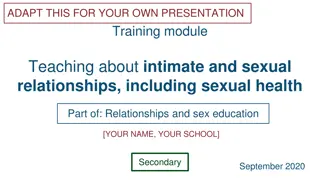
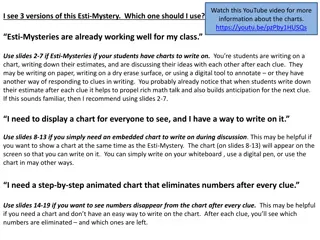
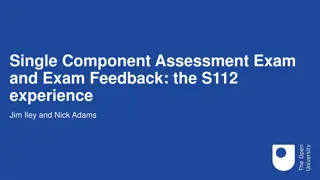

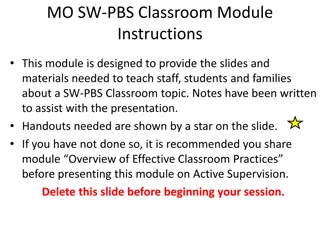

![Teaching Health and Prevention at [Your School]: Training Module for Physical Health and Mental Wellbeing](/thumb/167013/teaching-health-and-prevention-at-your-school-training-module-for-physical-health-and-mental-wellbeing.jpg)


